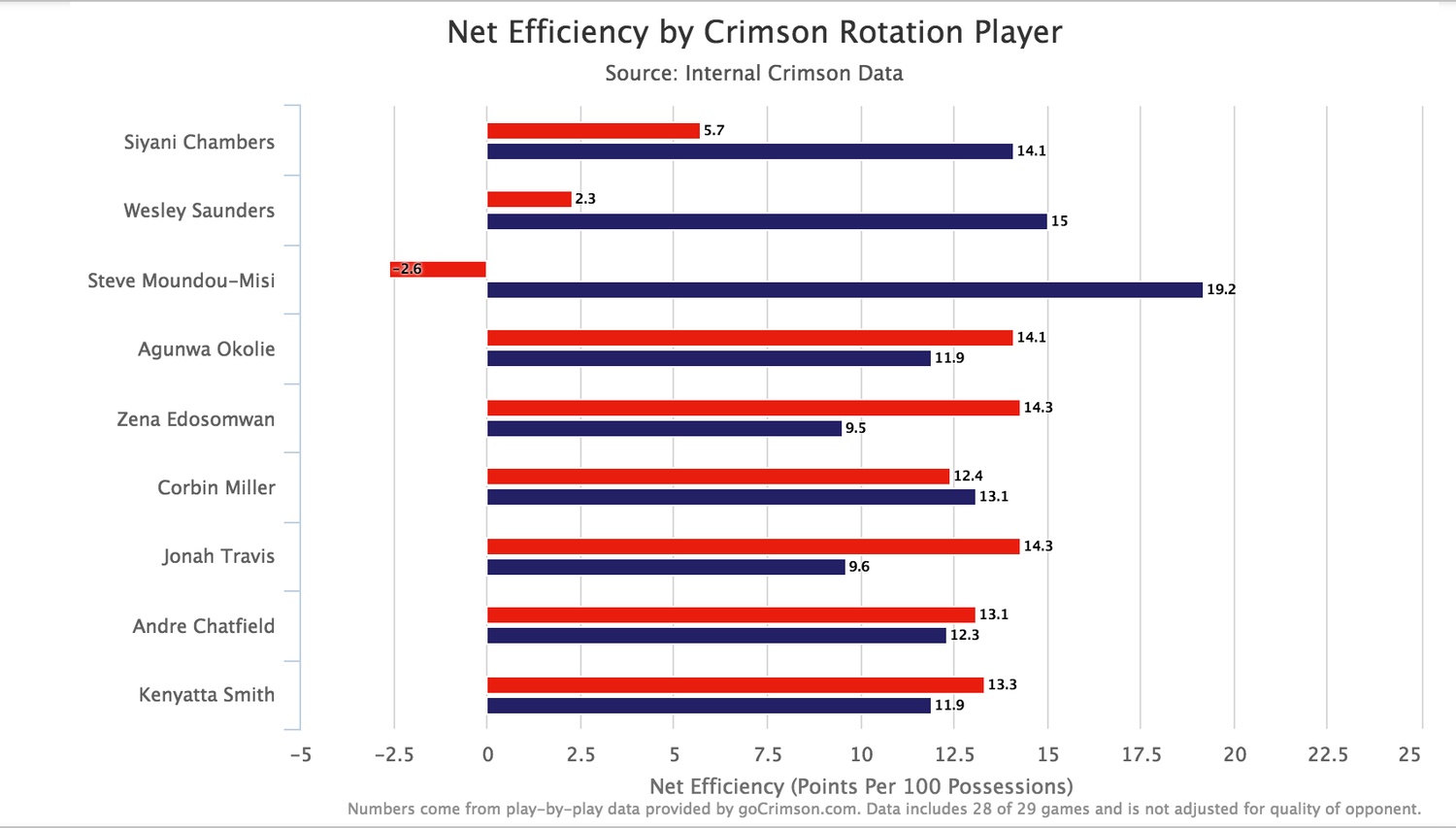
News
Cambridge Residents Slam Council Proposal to Delay Bike Lane Construction

News
‘Gender-Affirming Slay Fest’: Harvard College QSA Hosts Annual Queer Prom

News
‘Not Being Nerds’: Harvard Students Dance to Tinashe at Yardfest

News
Wrongful Death Trial Against CAMHS Employee Over 2015 Student Suicide To Begin Tuesday

News
Cornel West, Harvard Affiliates Call for University to Divest from ‘Israeli Apartheid’ at Rally
Internal Crimson Analytics Recognize Moundou-Missi as Best Crimson Player

According to play-by-play data compiled by The Crimson’s Data Science Team, the most valuable player Harvard is not former Ivy League Player of the Year senior wing Wesley Saunders, but co-captain Steve Moundou-Missi—the league’s Defensive Player of the Year.
Harvard scored at a sizzling rate of 111.7 points per 100 possessions when Moundou-Missi was on the floor, which dropped to just 103.6 when he sat. The biggest change, however, was on the defensive end. Harvard gave up just 92.5 points per 100 possessions when Moundou-Missi played, the best of any Crimson regular, and gave up 106.2 when he sat. Without its co-captain, the Crimson was actually outscored by eight points, something that did not happen with any other rotation player on the bench.
The senior’s impact could be seen in the team’s field goal shooting percentage as well, which went up 4.5 percent with him on the floor. Junior co-captain and point guard Siyani Chambers proved similarly valuable, with the team shooting nearly seven percent better from two-point range with him on the floor and turning the ball over nearly 20 percent less.
Two of the Crimson’s starters—junior Agunwa Okolie and sophomore Zena Edosomwan—fared worse by the metrics. Both were ranked among the 10 worst starters in the tournament by ESPN before March Madness began and the team was better in both cases without them on the floor. In the case of Okolie, although the team was nearly five points per 100 possessions better with him (and not backup sophomore Corbin Miller) on the floor, it was 6.3 points worse on offense. The Crimson turned the ball over less with the steady defensive specialist on the floor, but shot five percent worse from inside the arc.
Indeed, the Crimson was better when it played the combination of Saunders, Chambers, and Miller rather than the lineup featuring than Saunders, Chambers, and Okolie. Opponents shot nearly three percent better against the latter combination, rebounding more of their misses, but Harvard turned the ball over less and shot better from the field itself.
Methodology:
This week, The Crimson took play-by-play data from 28 of the team’s 29 games and aggregated it to find statistics for each lineup that has taken the floor this season. By calculating the marginal distributions of points per possession, The Crimson generated offensive and defensive efficiency numbers, measured—as is standard—by points scored and allowed per 100 possessions. Harvard plays roughly 64 possessions a game and, in general, outscores opponents by 10 points per 100 possessions—analogous to its seven points per game.
The data above reflects net efficiency numbers for individual players, taken by subtracting the number of points scored per 100 possessions from those scored on Harvard. Numbers were not adjusted for quality of its opponents.
—Staff writer David Freed can be reached at david.freed@thecrimson.com.
Want to keep up with breaking news? Subscribe to our email newsletter.
